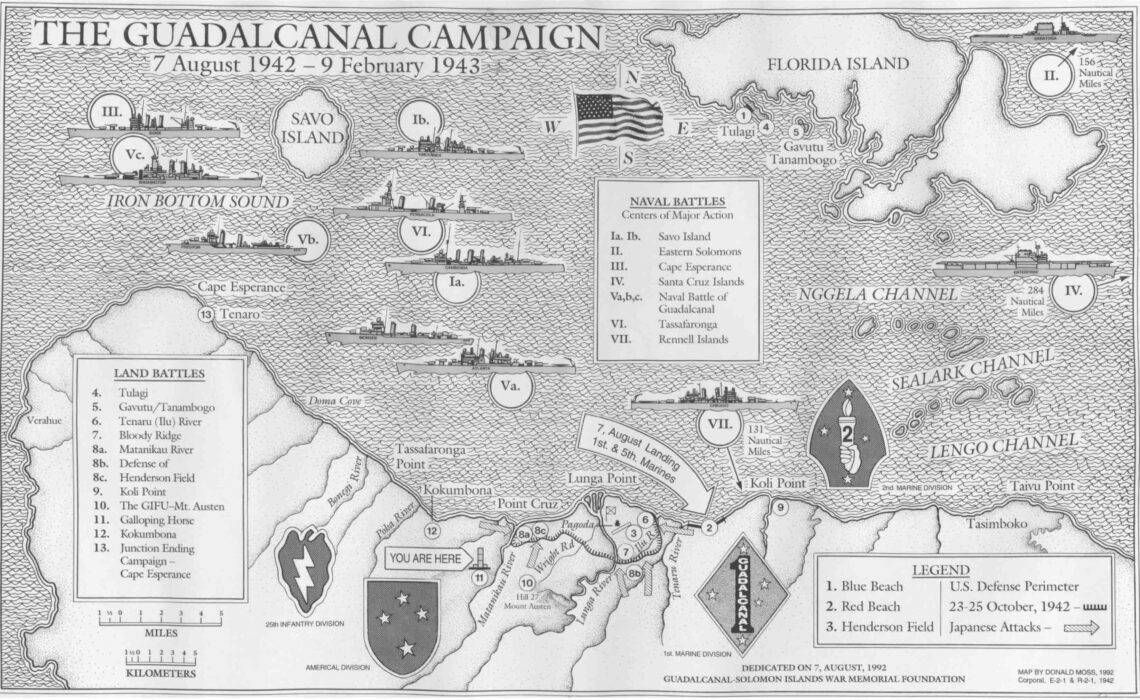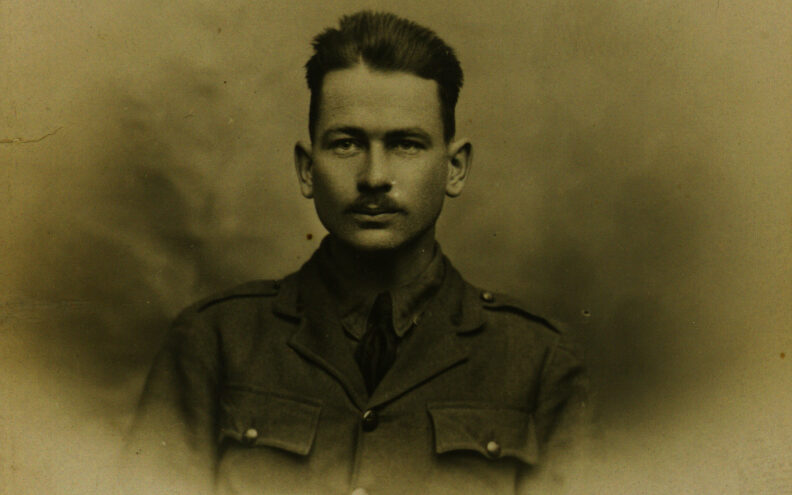-
Stories: Krystyna Stachowitz Farley
Krystyna Stachowitz Farley is one of many veterans in the archive of the Veterans History Project who served during WWII. Her story stands apart because Krystyna served in the “Anders Army” a unit composed entirely of Polish men and women formerly imprisoned by the Soviet Union. From her childhood in Poland, through captivity in Russia, and finally into military service in the Mediterranean theater, Krystyna offers a rare perspective into the Polish experience of WWII. In September, 1939, the European war began when first German, then Russian troops invaded Poland. In August, addendums to the Molotov-Ribbentrop Pact had already partitioned Poland between the two conquering nations, and became moot only…
-
Stories: Guadalcanal
The wealth of personal narratives within the Veteran’s History Project comes with one problem: context. Veterans always take the time to explain the where and when of their experiences, but the why and how can sometimes present a challenge. During interviews with veterans who served at Guadalcanal, many ended up referring to history books they’ve read to better understand their own experiences within this complex, six-month campaign. This week, we’re providing some context of our own in: Stories: Guadalcanal This project contextualizes the campaign by locating each veteran’s experience within a broader history. The impetus came with a detailed map created by marine veteran and artist Donald F. Moss. Take…
-
Stories: Longshaw Porritt
CONTENT WARNING: This post includes graphic photos of wounded and dead people. Discretion is advised. One of the more varied wartime experiences in the Veterans History Project belongs to a veteran whose voice we cannot hear. Longshaw Kraus Porritt of Canton, Connecticut: one of only two veterans in the archive who served in World War One. In 1982 – nearly 20 years before the Veterans History Project was founded – Longshaw died of natural causes. While we don’t have his oral history, the archive does contains his vast collection of photographs, scrapbooks, and a written memoir. From these resources, we know that Longshaw first enlisted in the American Ambulance Field Service in March 1917, entering a war already 3 years…
-
Why the Veterans History Project Matters
Veterans Day began as a holiday to celebrate the Armistice that ended the War to End All Wars. Of course, we know now that, although the fighting stopped at 11AM on November 11th, 1918, it was far from the end of all wars. In the USA, Armistice Day was changed to Veterans Day by President Dwight D. Eisenhower after WWII. Today, it honors all American Veterans from all conflicts. It is a day when we can honor the patriotism embodied in the veteran experience. For our part, members of the Veterans History Project team have taken today to describe why this project matters to them: “The Veterans History Project is…
-
Visualizing: What We Don’t Know (Pt. II)
If you haven’t already, take a look at Pt. 1 of “What We Don’t Know” to learn about other obstacles in the Veterans History Project archive. The Incredible Transcribing Robot! The CCSU Veterans History Project features over 700 oral histories, which are all viewable on YouTube. And one of the many benefits of that platform is YouTube’s capacity to auto-generate transcripts. Transcripts are immensely useful, not just because they offer subtitles for viewers who may have a hard time hearing or understanding the interview. Referencing the time-coded transcript of an interview allows a viewer to quickly identify and navigate to relevant sections. Without it, the only way through is the…
-
Visualizing: What We Don’t Know (Pt. I)
The Written Record When oral histories are collected for the Veterans History Project, a few written questions are also answered. Once compiled, these written answers form a useful index to the archive. The Veterans History Project’s search function works by referring to this index. It quickly sorts the archive by gender, by conflict, by branch, and so forth. As you’ve seen in previous posts, this same information can also lend itself to deeper analysis of the archive. A Question of Structures Unfortunately, some aspects of the index are less usable than others. Almost every veteran recorded the unit or ships of their service. However, the formatting of their answers was…
-
Visualizing: Women and the Veterans History Project
The United States military has never fought a war without women. From the American Revolution to the conflicts of our lifetime, women have served in recognized and unrecognized roles. With time, the work performed by American military women has expanded from support roles and medical work to direct combat. The Veterans History Project includes oral histories from some 52 women. As participants in conflicts ranging from WWII to Iraq and Afghanistan, these veterans offer a valuable perspective on women in the US military. Most veterans interviewed for the Veterans History Project participated in WWII, and the same is true for the subset of female vets. Many served specifically in the Nurse Corps, which predates WWI. Our archive also features two WASPs: Women Airforce…
-
Visualizing: Comparisons
How representative is the Veterans History Project? The 20th century saw the US military engaged in conflicts around the world. According to the U.S. Department of Veterans Affairs nearly 42 million American men and women served their country in these conflicts. From those millions of veterans, the Connecticut Veterans History Project has nearly 800 different entries. And while that may seem a small snapshot, the oral histories alone add up to nearly 1000 hours. Comparing historic statistics from the nation-wide V.A. to the Connecticut-wide Veterans History Project helps us better understand how this collection relates to the American military experience in the 20th century: By making this comparison, it’s easier to see how the Project does –…
-
Visualizing: Age at War Start
CHOOSING QUESTIONS The Veterans History Project archive contains nearly 800 oral histories from Connecticut veterans. These interviews are accompanied by written answers to some basic questions about each veteran. The transcribed answers to these questions now form a large database that we can use to quickly learn about these veterans as a group. But one crucial question was missing: How old were you when you enlisted? This question almost always came up over the course of each interview, but the answer wasn’t written down. As a result, a systematic answering of this question would involve viewing hundreds of hours of oral histories and recording the answer when (and if) it was provided. Luckily, two crucial answers were systematically recorded for each interview: What is your date of birth? What wars did you…
-
Welcome!
Welcome to the new blog for the Veterans History Project at Central Connecticut State University! On this blog you will be able to find news and announcements about the project as well as stories and discoveries from our collections. Over the next month, in the lead up to Veterans Day, we will be sharing several posts with information and insights about our collections. We look forward to using this new platform to honor our Connecticut veterans and learn from this treasure trove of American history.


